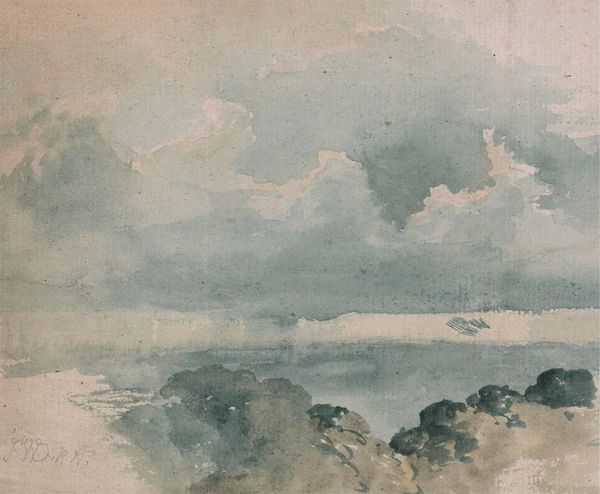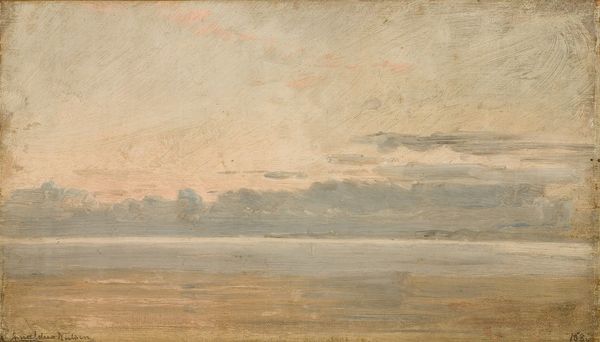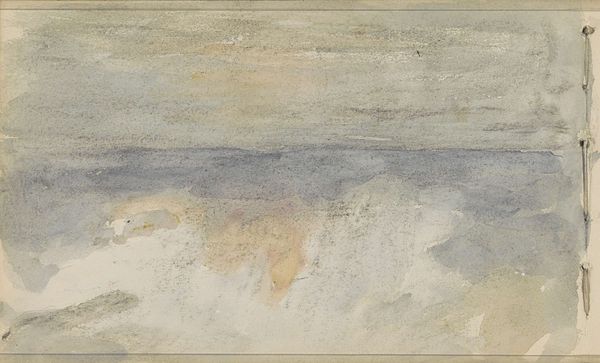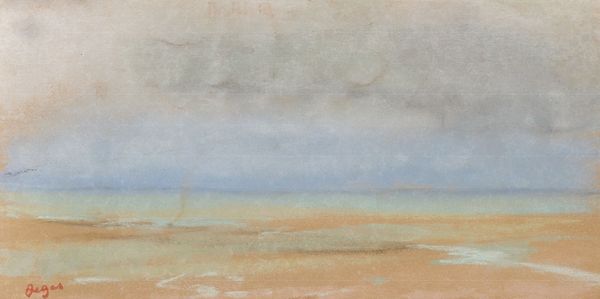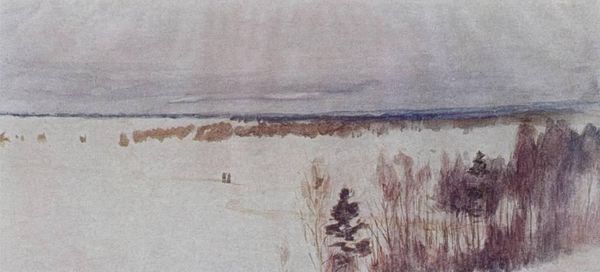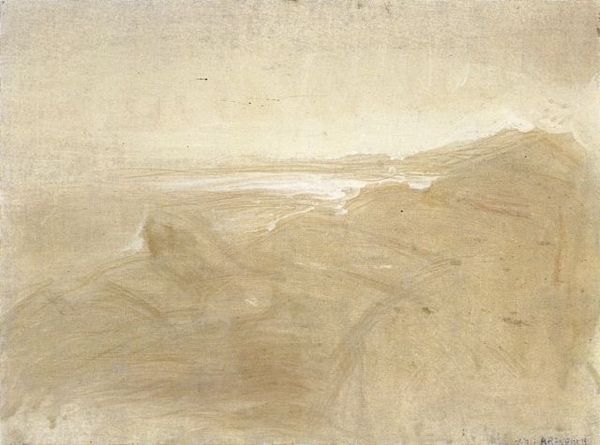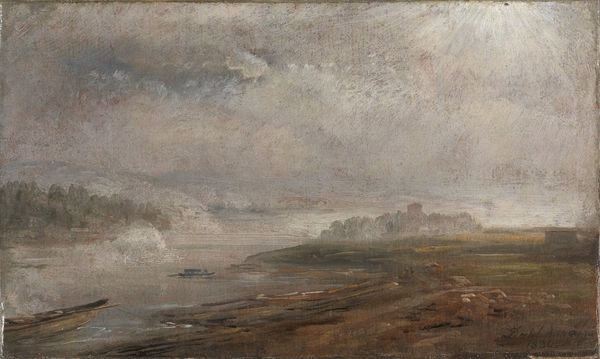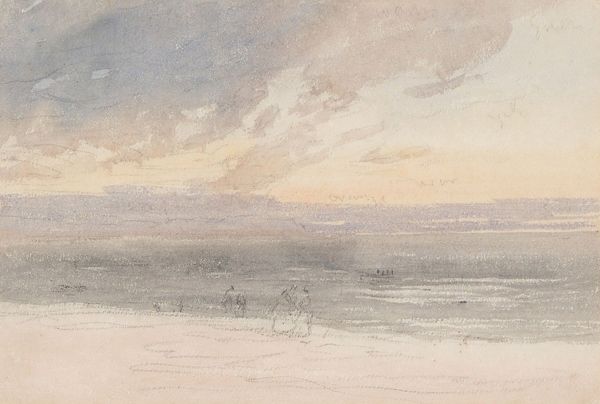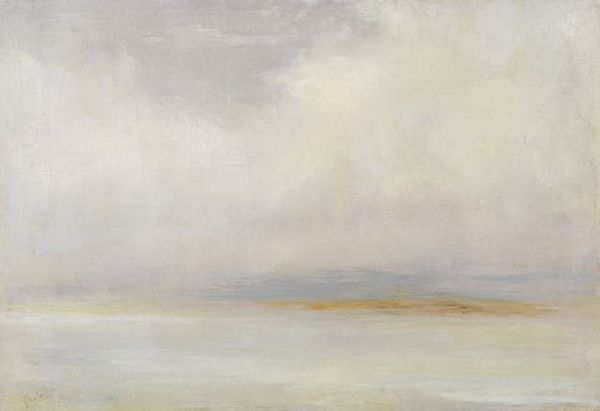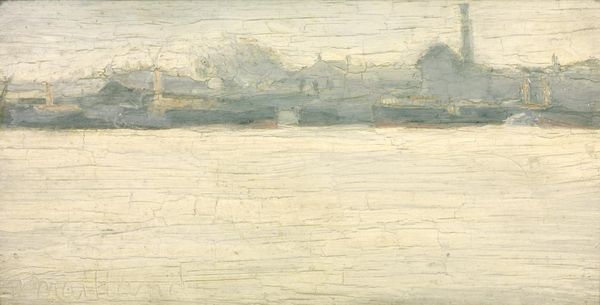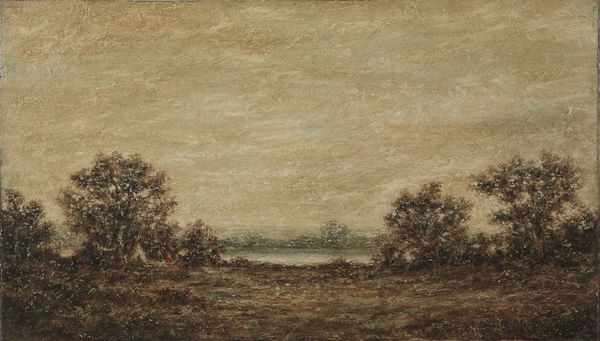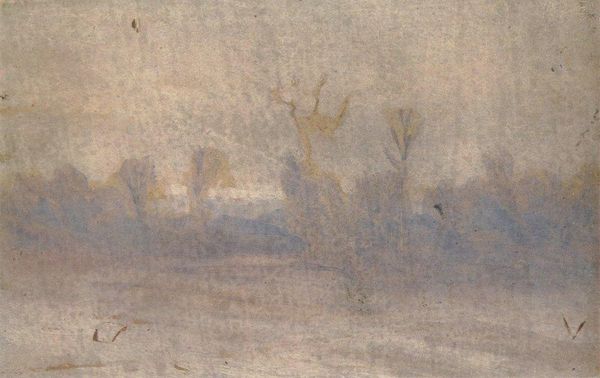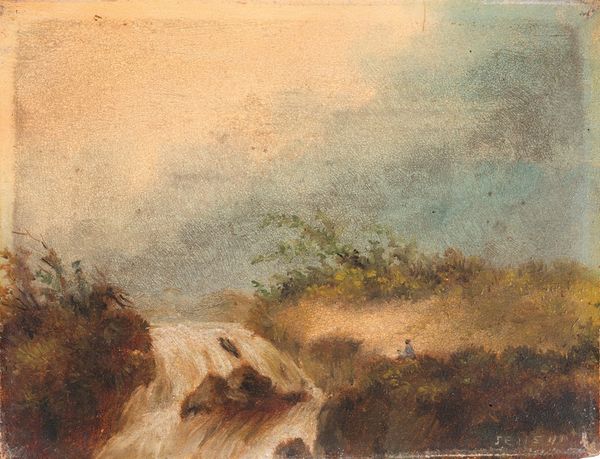
Copyright: Armando Reveron,Fair Use
Curator: Here we have Armando Reverón's "El Playón," painted in 1929. Reverón, a Venezuelan artist, is renowned for his distinctive impressionistic landscapes. Editor: My initial reaction is one of hazy calm. The limited palette evokes a dreamlike atmosphere. Is it watercolor? It's as if the scene is emerging from mist. Curator: Actually, this piece is oil on canvas. Understanding Reverón requires considering his context: He lived much of his life in seclusion near the coast, a self-imposed exile fueled by mental health struggles and societal pressures. “El Playón,” for instance, wasn't just a beach; it became Reverón’s world. Editor: Ah, yes, that sense of being enveloped... the almost monochromatic scheme perhaps reflecting psychological isolation. The recurring motif of the coast throughout his body of work speaks to the sea as a symbol, potentially of both freedom and confinement. Curator: Precisely! And let’s not forget the gendered aspect here. His muse and partner, Juanita, was an essential part of his existence. It has been suggested that his focus on her suggests something larger regarding feminine energy during the period. Her absence in works like “El Playón” therefore becomes intriguing. Is it his attempt to come to terms with what is to come, as Juanita's and his own sanity was beginning to wane? Editor: And thinking of his palette, these earth tones echo the local environment, a deliberate attempt, I think, to capture not just a visual representation but the very essence of the place and its connection to the artist’s inner state. This wasn't about objective depiction but subjective experience. Reveron felt the landscape, embodied it... he translated that lived experience onto the canvas using simplified forms. Curator: And this gets at the heart of his impact on the local culture: Reverón became something of a cultural phenomenon by daring to represent a non-official or academic Venezuelan national identity in the arts, by emphasizing individual perception and breaking formal conventions to grapple with his psychological states and relationship to his surroundings. Editor: Reveron gives us more than just an impression, rather the essence of emotional memory and personal attachment made physical with oil on canvas. Curator: A place where the inner turmoil is projected into reality.
Comments
No comments
Be the first to comment and join the conversation on the ultimate creative platform.
